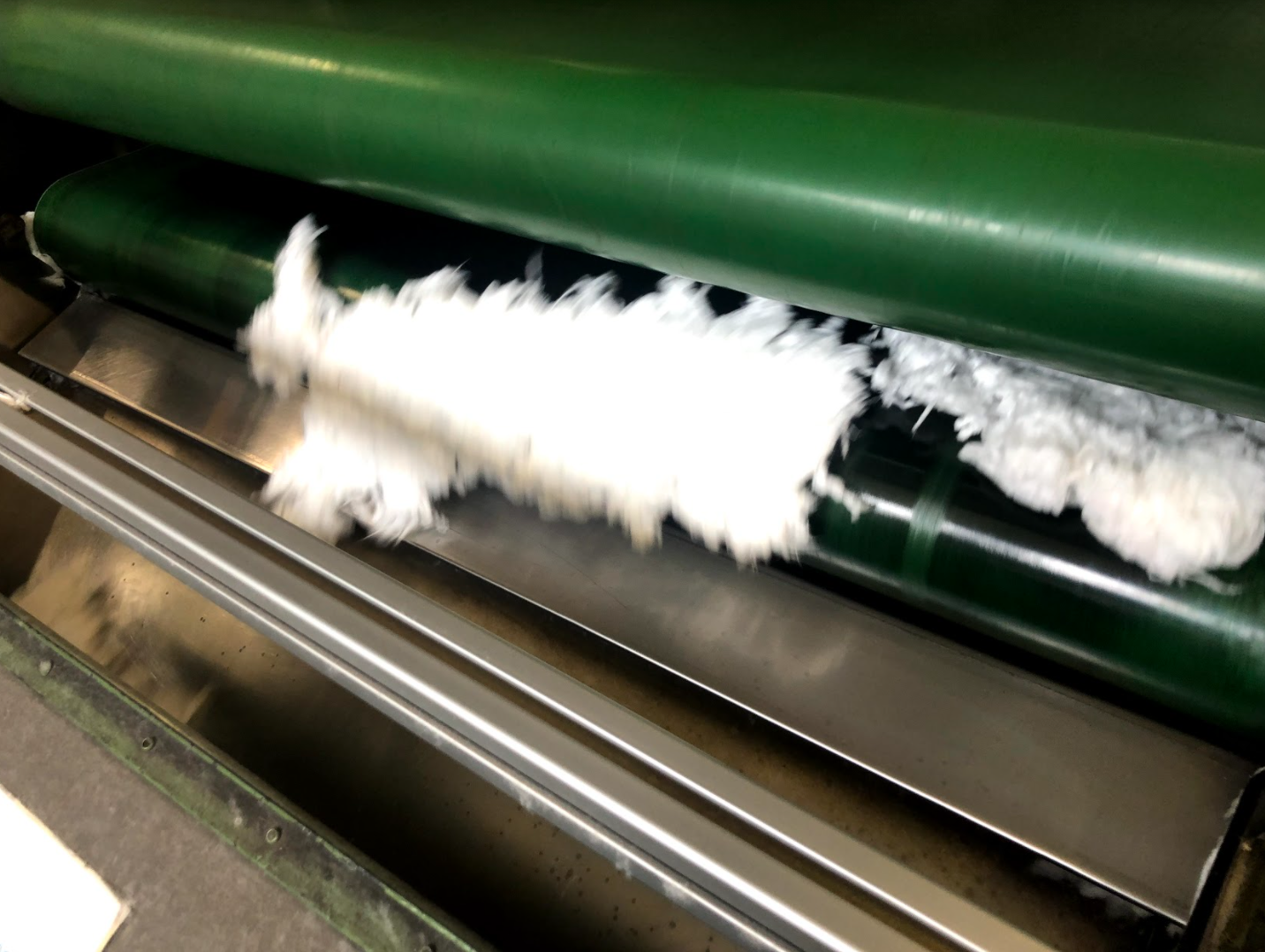The pelzGROUP started in the 1950s with the production of cotton wool. We use so-called cotton combers, often as certified organic cotton or in fair trade quality, such as GOTS or OEKO-TEX. The cotton is cleaned and bleached, and then processed into cotton wool pads or cotton buds using hydroentanglement.
Cotton wool

Step 1: Cleaning and bleaching
For our production, we use cotton combed fibers. Cotton combed fibers refer to fibers that are too short to be used in the textile industry. We source them from Turkey, India or Pakistan. During bleaching, the remains of the husk and any contamination are removed from the hollow fibers.
The fats that sit on the fibers are removed – after all, they are supposed to be highly absorbent.
And by the way: we reuse the process water multiple times by cleaning it again and again in our filter system. Finally, it goes into our biological purification plant, where it is cleaned to drinking water quality.
Step 2: Production of nonwoven materials for cotton pads
Using the bleached cotton fibers, we produce long bands of nonwoven material using our spunlace (hydroentanglement) system. The fine, high-pressure water jets intertwine the dry, aerodynamically arranged cotton fiber web into a nonwoven material at over 200 bar.
Step 3: Punching the cotton wool pads
In the last step, the long nonwoven bands are processed into cotton wool pads. The cotton bands are automatically unrolled and stamped into circles or squares. The finished cotton wool pads are then packaged in printed PE bags, which we also produce, by the way. This is how we manufacture 25,000 cotton wool pads a minute, every day!




